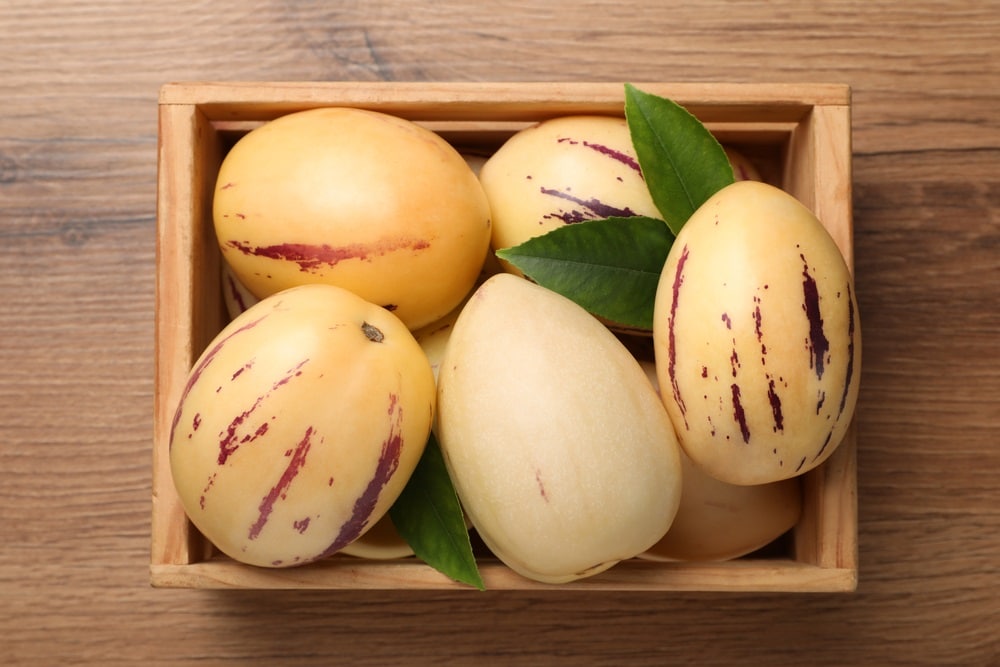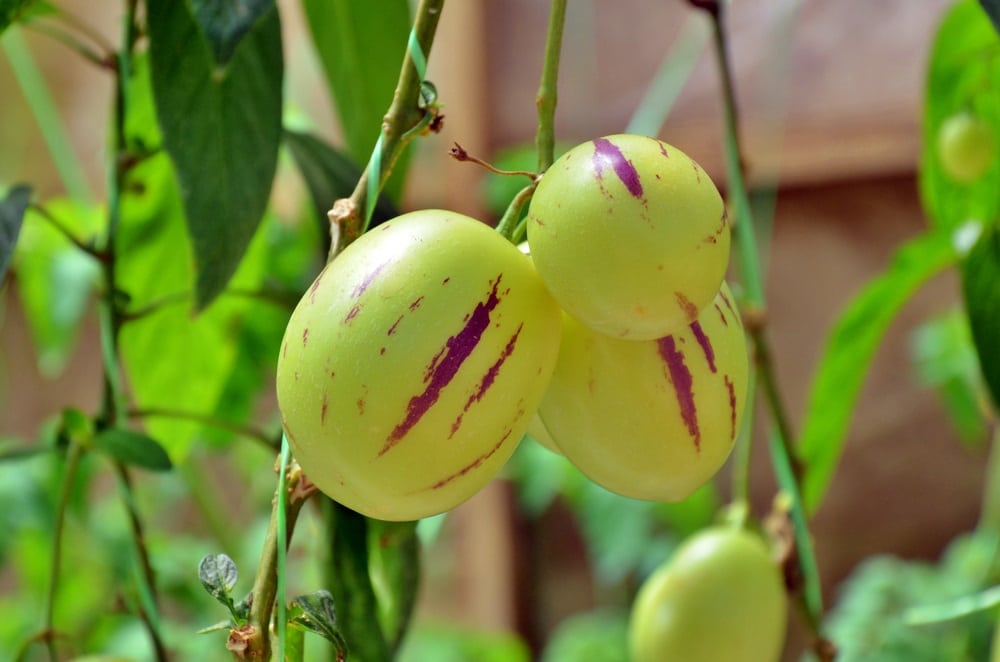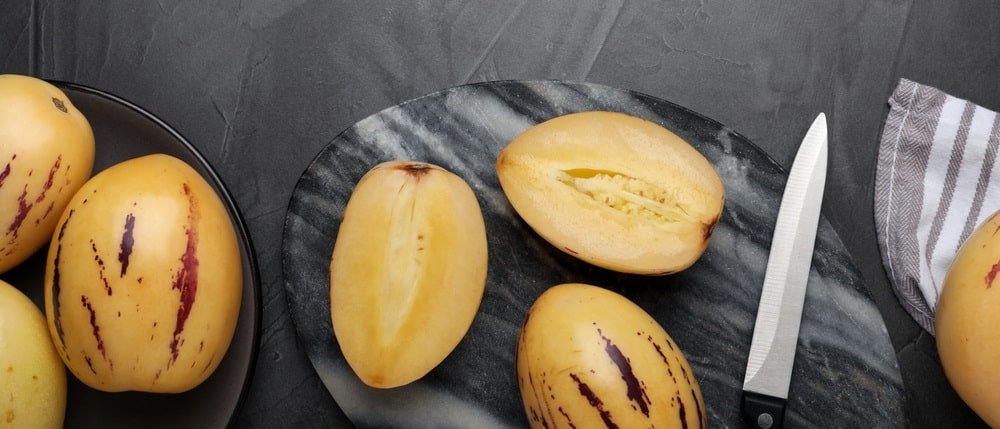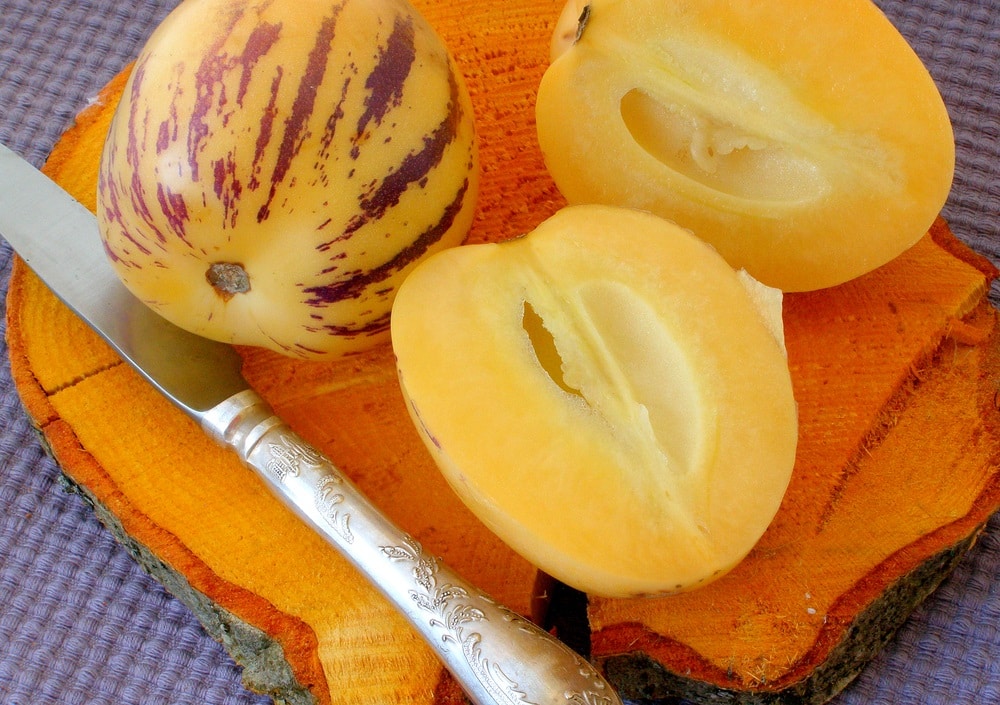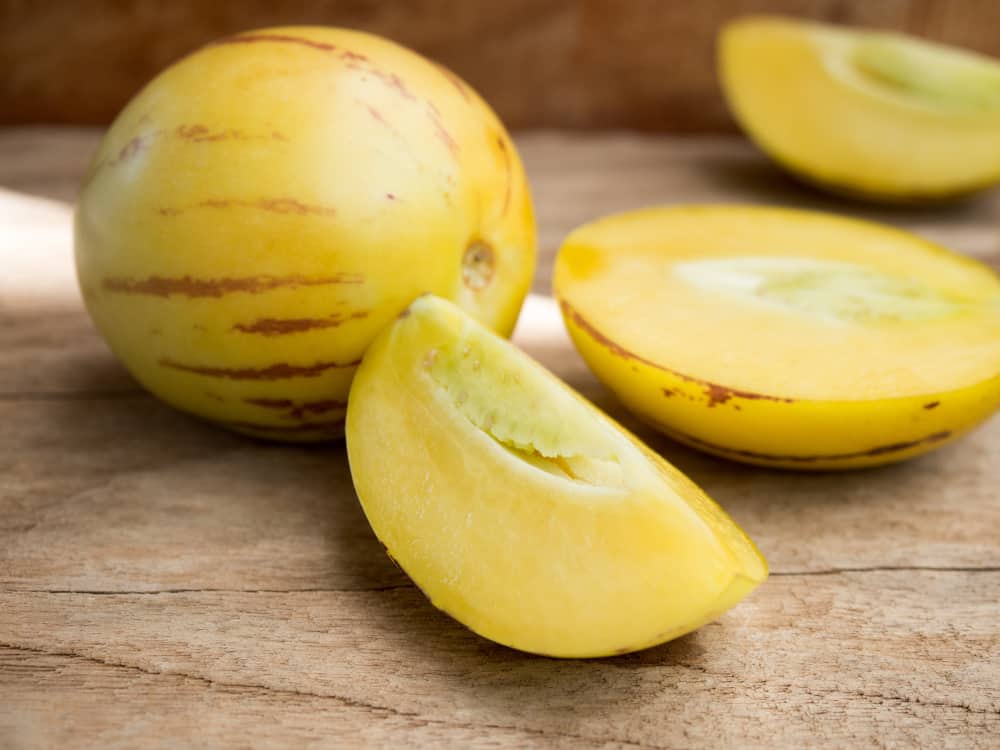
Have you ever seen a pepino melon in your local supermarket? Perhaps not – you may have to search for them in a farmer’s market.
Pepino is Spanish for “cucumber,” and the name gives a clue about the fresh taste these pretty little fruits have. They are sometimes called pepino dulce, meaning “sweet cucumber.”
These delicious little fruits do not get big like normal melons do but are small, oval, tomato-sized fruits with yellowish skin with purple stripes.
These beautiful little melons are loaded with vitamins and bring an abundance of nutrients that will boost your immune system.
So, if you’re looking for a healthy, novel food item to add to your diet, then you won’t find a better option than pepino melons. They are usually reasonably priced, and you can purchase them in bulk, depending upon your consumption.
It can be a little tricky to tell when a pepino melon is ripe, so we’ve given you some information below.
How to Tell if a Pepino Melon Is Ripe
1. Color
The color of the fruit is the biggest indicator that can help you determine if a pepino melon is ripe or not.
When a pepino is immature, it will often be a faded yellow color. As it matures, it will develop purplish stripes, and the yellow sections will brighten.
In most situations, if the fruit is unripe, you’ll notice a faded region between the stripes on your melon. This faded region will indicate that the melon has yet to ripen and still needs to turn a brighter color.
In case you’re wondering, the skin is edible. When the region between the stripes turns to bright yellow, gold (in the case of the Sugar Gold variety), or light brownish, then you’ll know you’re your pepino melons are ripe and can be used in your recipes.
2. Flavor
You can also tell if a pepino melon is ripe by its taste. An underripe fruit will be bland with little flavor or sweetness. A ripe melon will be sweetish and taste something like a pear.
3. Texture
Aside from the change in color and flavor, you can also judge the texture of the fruit to determine its ripeness. Ripe pepinos will be slightly soft and will yield firm pressure with the thumb. Unripe ones will be hard and unyielding.
4. Fragrance
Ripe fruit will have a sweetish, fragrant aroma while unripe fruit will have no smell at all.
How to Grow Your Own
Now that you know a little more about these versatile melons, you may be keen to grow your own. Give them similar growing conditions to tomatoes (they’re in the same family), and you cannot go wrong.
They like a sunny, sheltered well-drained situation with rich loamy soil. You can even grow them on a balcony!
How to Use and Store Them
Your ripe pepinos can be used in so many different ways. Chop them into a green salad or enjoy them sliced, as a dessert with ice cream. Add them to a fruit salad. They are also delicious preserved as jam or chutney.
Ripe pepinos do not store well in the refrigerator as they become soft and mushy. Keep them in a fruit bowl at room temperature until you are ready to enjoy them.
The best thing about this fruit is that it brings a limited amount of sweetness to the users. For this reason, it is just perfect for users that don’t prefer to eat completely sweet melon.
You can use it in salads as well as a variety of other dishes according to your preferences. All you need to make sure before using this ingredient is that it is ripe and has a juicy texture.
The best way to handle this fruit is to slice it from the middle and then use a scoop to remove all the fruit from the shell. It will barely take a minute, and you won’t have to deal with any extra mess.
So, if you’re struggling to manage Pepino melon, then trying this method will help you save a lot of time in the preparation of your salads.
To Conclude
To determine whether or not Pepino Melon is ripe, you need to check the color of the fruit between the stripes. A ripe melon brings a dark brown color to the users, and the texture is soft and juicy.
So, you can apply a bit of pressure to the fruit, and it shouldn’t put up a fight.
On the other hand, if you’re dealing with fruit that has a faded color and a firm texture, then it is better to let it ripen for a few more days.
Using unripe Pepino melon will have a negative impact on the quality of your salad, and you won’t get any desirable taste from this dish.
Pepinos are delicious fruits to enjoy when ripe, but please don’t eat them green. The unripe fruit contains large amounts of solanine, a toxin that will give you stomach cramps and nausea.
We hope our guide has shown you how to know when your pepinos are ripe and how to use them.
